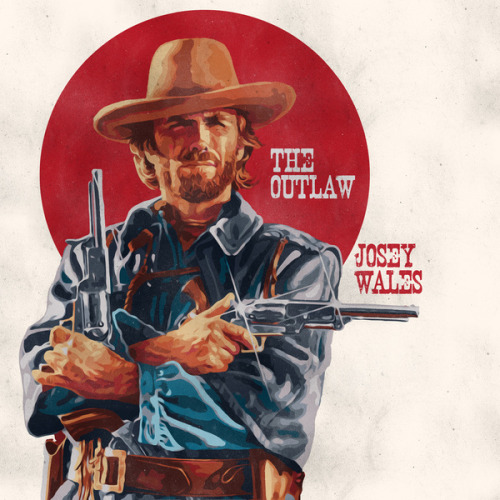

Kaufman insisted on filming with a meticulous attention to detail which caused disagreements with Eastwood, not to mention the attraction the two shared towards Locke and apparent jealousy on Kaufman's part in regards to their emerging relationship. A rift between Eastwood and Kaufman developed during the filming. Principal photography began in mid-October 1975. The film also featured his real-life seven-year old son Kyle Eastwood, with Ferris Webster hired as editor and Jerry Fielding as musical composer.

This marked the beginning of a close relationship between Eastwood and Locke that would last six films and the beginning of a romance that would last into the late 1980s. Sondra Locke, also a previous Academy Award nominee was cast by Eastwood against Kaufman's wishes, as the granddaughter of the old settler woman, Laura Lee. Kaufman cast Chief Dan George, who had been nominated for an Academy Award for Supporting Actor in Little Big Man as the old Cherokee Lone Watie. Ĭinematographer Bruce Surtees, James Fargo, and Fritz Manes scouted for locations and eventually found sites in Utah, Arizona, Wyoming, and Oroville, California even before they saw the final script. The characters of Wales, the Cherokee chief, Navajo squaw and the old settler woman and her daughter all appeared in the novel. Kaufman wanted the film to stay as close to the novel as possible and retained many of the mannerisms in Wales's character which Eastwood would display on screen, such as his distinctive lingo with words like "reckon", "hoss" (instead of "horse") and "ye" (instead of "you") and spitting tobacco juice on animals and victims. Michael Cimino and Philip Kaufman later oversaw the writing of the script, aiding Chernus. The script was worked on by Sonia Chernus and producer Bob Daley at Malpaso and Eastwood himself paid some of the money to obtain the screen rights. The Outlaw Josey Wales was inspired by a 1972 novel by Forrest Carter, originally titled The Rebel Outlaw: Josey Wales and later retitled Gone to Texas. Pahreah site in Utah, filming location of the film.

At the conclusion of the war, Captain Fletcher persuades the guerrillas to surrender, saying they have been granted amnesty. Wales joins a group of pro- Confederate Missouri Bushwhackers led by William T.

Andrews" cross of the Confederacy Battle Flag, symbolizing his change from the union to the Confederacy. He leans on the cross, crying, bending over the cross to resemble a "St. Lane's Redlegs from Kansas.Īfter he buries his family, he marks their grave with a cross. Josey Wales, a Missouri farmer, is driven to revenge by the murder of his wife and son by a band of pro- Union Jayhawkers- Senator James H.


 0 kommentar(er)
0 kommentar(er)
